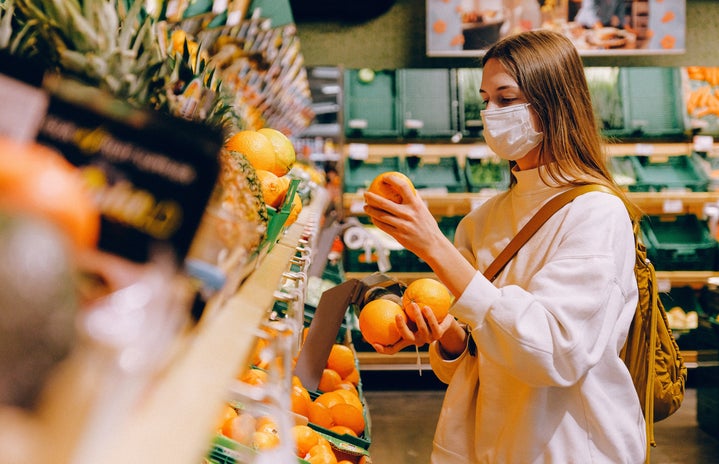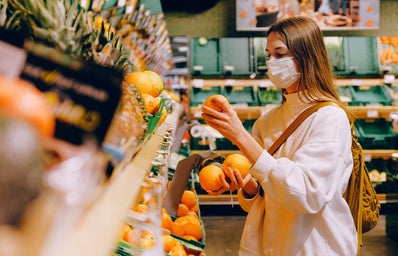As more contagious variants of the Coronavirus are presenting themselves, it is more important than ever to be washing your hands, staying home when possible, social distancing and wearing a mask. Despite more people getting vaccinated every day, it is crucial to not become lazy in these safety practices. As we come up on the anniversary of one year living in lockdown, here are a few ways to refresh your memory on masks, mask wearing and a few new practices to consider.
Get to know your masks
When it comes to the heavy duty mask, the N95 is your best choice. It filters out 95% of 0.3 micron particles, which are the smallest and hardest particles to trap. Although, the N95 does have its drawbacks; if it is not used properly or is worn incorrectly, it will not do its job, and the practicality of it becomes null. With the surge of N95 purchases made in March 2020, it has also become increasingly difficult to find N95 masks now, and counterfeits are common and ineffective. N95 masks are really only recommended if you are working in a highly contagious area or if you are in an area with close quarters where the virus is common. This is why they are recommended for healthcare workers and first responders, because they know how to use them properly, and the mask protects them when they are doing their job. Another situation where it would be appropriate for normal people to wear an N95 mask is on an airplane – if you travel for your job, airports are one of the hotspots for COVID-19, and while the plane has good filtration, you are still in close quarters with others and top safety is recommended. But if you just want an N95 “to have” as a souvenir from the pandemic, please do not purchase one, and instead use one of the other masks and mask wearing techniques in this article.
The KN95 is another popular heavy duty style of mask, which is typically manufactured with ear loops instead of the tight fitting head bands that are used on the N95. It has the same effectiveness of the N95, trapping 95% of hard to trap particles. Keep in mind, the ear loops mean it may not be as snug a fit, which means that you have to make sure you are wearing it properly – just like the N95 – for it to work up to its full potential. Since these masks are also used primarily by healthcare workers, it is also not recommended to purchase for the normal person going to the grocery store, since the mask market is riddled with counterfeits of the KN95 as well, which will only work about as well as a cloth mask (what a typical consumer should be wearing anyway).
An up-and-coming mask among health experts is the KF94, which is a Korean-manufactured mask. The “KF” stands for “Korean Filter”, and the 94 represents the particle blocking percentage of 94% filtration. This mask is renowned for its quality, high filtration rate and snug fit. Its top and bottom flaps and moldable nose bridge make it comfortable and easier to speak in than some other masks. However, it is important to check when purchasing a KF94 that it is made in Korea, because quality control efforts there are top notch, and they make your chances of accidentally purchasing a counterfeit significantly less likely. These masks are also worn by the general public in South Korea, and are available to purchase for the American market as well.
A rectangular surgical mask is one of the more common masks you will see people wearing in public since they are so easy to purchase in bulk. This mask is made from pleated synthetic fabric that expands to fit the wearer’s face. When tested in a lab, this mask can trap between 60-80% of the particles that you breathe. However, with more common public use, people tend to leave gaps around the edges of the mask, which makes it less effective at stopping the particles from entering the air. This can be fixed by knotting the ear loops and tucking the mask a certain way – there are many different tutorials on how to do this to prevent the imperfections of this mask. However, it is not recommended to rewear the same surgical mask over and over again, as it has likely trapped other particles from the air in it each time it is removed, and they are difficult to wash. But replacing these masks can end up being costly if you are continually having to buy new ones, and it is bad for the environment to dispose of so many masks.
The best non-medical mask to wear right now is proven by studies to be a two layer cloth mask with a third layer of filter material. This helps trap particles well, and removing the filters makes both the masks and the filters easy to clean; simply throw them in the washer and wash cold, and then hang the masks to dry. However, filtration varies for cloth masks depending on the type of fabric used. A good way to determine if your cloth mask is effective is to hold it up to a light source and see how much light seeps through the cloth. Another pro of using a cloth mask is that they are customizable – choose a fabric that goes with your outfit or reflects your personality, and choose whether you want a mask that loops around the ears, wraps around your neck, or ties around your head (typically, head ties create a tighter fit than ear loops).
Mask wearing: the good and the bad
With the newer variants of the virus showing more contagious strains, the CDC is encouraging people to double-mask when possible. This helps better prevent you from getting the virus, while also adding an extra layer of protection for those around you if you are asymptomatic. The best way to double-mask is to wear a cloth mask over any surgical or medical mask, which helps seal gaps around the edges to trap more particles.
If you are getting increasingly annoyed with your makeup staining your favorite masks or your “maskne” acting up because of the tight fit to your face, consider purchasing a mask spacer. Mask Spacers, or “brackets,” are cage-like frames you wear underneath your mask, and they are usually made with plastic or silicone. These spacers help to improve breathability (while the spacer does not actually change your oxygen levels, it may help you feel like you have more “room” to breathe), improve clear speaking, prevent makeup smudging, and prevent mask-prone acne breakouts. However, it is important to make sure that you find a spacer that fits your face and mask, so that it is not creating gaps between the mask and your face. You may also still experience “maskne” with a spacer in the area where the bracket touches your face, so it is not the end-all be-all of stopping your breakouts. If you do decide to use a mask spacer, make sure you are washing it after every use, just like you would a cloth mask.
Another thing to keep an eye out for in the mask market is masks with respirator valves – these are a big “no.” While the valve filters the air that you inhale, it does not filter the air that you exhale out of the mask, which means that you are sending your germ particles out at the same rate as if you were not wearing a mask at all. Since one of the key reasons to wear a mask is not to protect yourself, but to protect others around you from your germs, this mask endangers those around you and is actually worse off.
Masks and glasses have always been an annoyance with the pandemic, since your glasses are constantly fogging up. An easy way to prevent this is to make sure you are wearing a mask that fits your face – not only will it help prevent glasses fogging, but it will also protect you from the virus better! If you have a cloth mask, try wearing ones that have an insert in the nose bridge to adjust so that you have a more snug fit. Then, use your glasses to seal off the top of your mask, so that your breath does not escape into your eyes. There are also many new savvy gadgets online that help prevent glasses fogging if you are really having trouble.
Overall, the most important thing to remember is that any face covering is better than nothing, and the best mask for you is one that you will wear consistently. So go out there and stay safe!



